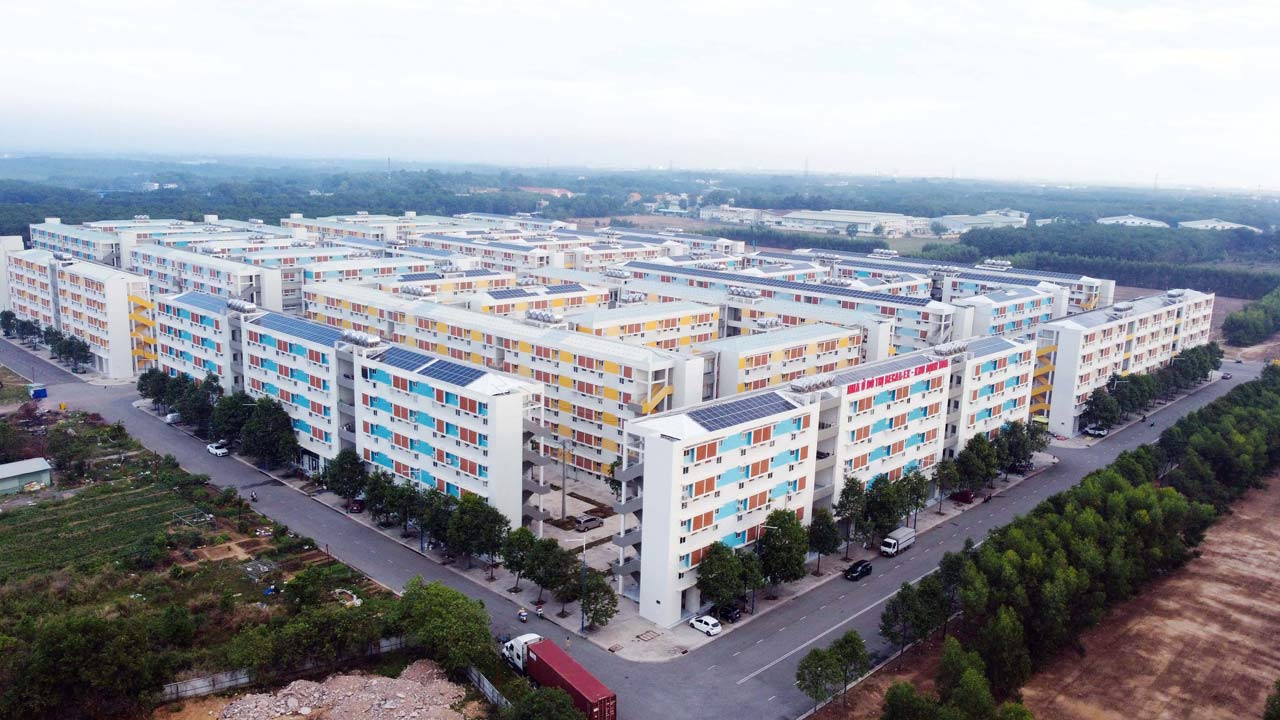Major cities and economic centers nationwide are now facing an undersupply of social housing. There are multiple challenges and hindrances, while favorable conditions are rare.
Multiple hurdles
Just take a look at the advantages first. Frankly speaking, the writer sees none, except potentially favorable conditions in the very long run. These may include tentative schemes to slap property tax (on those with the second home for instance) to have funds for social housing development; or the willingness of the leadership of some localities to look for solutions to address the social housing issue. The willingness is a non-starter, since it is difficult to gauge its effectiveness and viability.
Regarding the property tax, this solution can be likened to the initiative to use revenue from crude oil export to subsidize local oil prices that I have objected to. In short, the property tax, if any, must be considered a source of budget revenue like any other sources of income and cannot be separated for use in a specific sector.
Meanwhile, hindrances are overwhelming. They include the increasingly scarce land bank, be it in suburban areas or outlying districts; the bigger low-income population, i.e. the rising demand for social housing; and developers being not enticed into this segment due to the low profit margin and lack of soft loans for them to build houses for low-income earners.
The above-mentioned hindrances are real, but they mainly stem from an inadequate viewpoint on social housing development that is not suitable for Vietnam’s situation now and in the years to come.
Experiences from Japan and Singapore
Now, just think out of the box. The writer used to experience living in social houses in Japan and Singapore.
In Japan, while pursuing a PhD program with full scholarship, I was considered to have no income as scholarships are not considered income in Japan. After getting married, I was lucky to be entitled to an apartment in a Danchi managed by the local government after several attempts to draw lots. However, I and other lucky people could only lease, not buy, these Danchi apartments. The rent was quite low if the tenant had no income, but would increase to levels comparable to the tenants’ income levels, even to a higher rate than the market level (so as to discourage high-income tenants). The number of these apartments was small compared to the demand, so anyone winning the draw could be seen as a lottery winner.
When moving to Singapore, I was also lucky to obtain a “greencard” after just a few months working there. As a green card holder, automatically I had the privilege to buy a second-hand apartment developed and managed by the government-owned Housing & Development Board (HDB). Over 80% of Singaporeans live in such HDB apartments, so they can hardly be considered social housing units, though a small number of such units are reserved by the government for short-term leasing. It is noted that although homeowners have paid full sums for the apartments (at some VND10 billion or more), these units are in fact leased by the government for 99 years upon the initial handover. The transfer of these apartments is subject to numerous regulations, from the level of income to the legal status and the race of the buyer or seller.
The common ground for social houses developed and managed by the government in Japan and Singapore is that the supply is very limited and such houses are meant for lucky people or certain groups of tenants. More importantly, such houses are under the State ownership and are leased by the local government, rather than the one-off transfer like in Vietnam. The government reserves the right to set out legal conditions for the tenants to return the houses once they are no longer eligible for leasing criteria, especially income criteria. Another point in common for both Japan and Singapore is that such houses can be built right in the heart of the city instead of in outlying districts where available land is still ample like in Vietnam.
 Solutions for Vietnam?
Solutions for Vietnam?
Back to the situation in Vietnam. Social houses in Vietnam should be reserved for lease, which could be for long term, instead of being sold off. The entitlement to such houses should come with provisions on returning the houses once the tenants no longer meet conditions to continue renting the house. Only when so conditional can those houses be termed social ones, meant to help low-income people with accommodation as long as these tenants still are eligible, otherwise they will have to return the houses so as to make them available for poorer people. Such an approach will help address the dire situation of supply falling far short of demand.
In the world, perhaps with Singapore as an exception, the proportion of social houses is quite modest compared to the overall housing market, so the limited number of social houses in Vietnam should be seen as an acceptable reality.
Regarding the ownership, the cases in Japan and Singapore show that social houses are owned by the State and leased to the people, possibly with a very long term. In Vietnam, such houses could be owned by developers and leased to tenants at the market rate, but the State will subsidize part of the rent in line with its social policies.
It is noteworthy that the social housing policy in Vietnam is “neither fish nor fowl” as the State budget is still allocated for the purpose while from an outsider’s perspective it seems the State is utilizing private resources in this sector. For example, to have access to land, the developer is required to set aside 20% of apartments in a commercial project for social housing, while the State in reality has to offer the developer the land which could otherwise be used for other purposes. And, in nominal terms, it is the private developer that builds and sells social houses to the people, but the State is also mandated to arrange funds or ask banks to offer concessional funds for these developers and homebuyers as well.
If the State owns social houses it builds or entrusts private developers to build and lease to the tenants, under the latter case the State will subsidize the rent, then a clear-cut division between State and private engagements can be created to avoid a waste of resources.
Last but not least, only when policies and mechanisms to keep track of people’s income are effectively worked out can the social housing policy be not abused, as seen in cases of tenants of such houses for the poor still owning luxury cars. And those phenomena are not rare in Vietnam.









